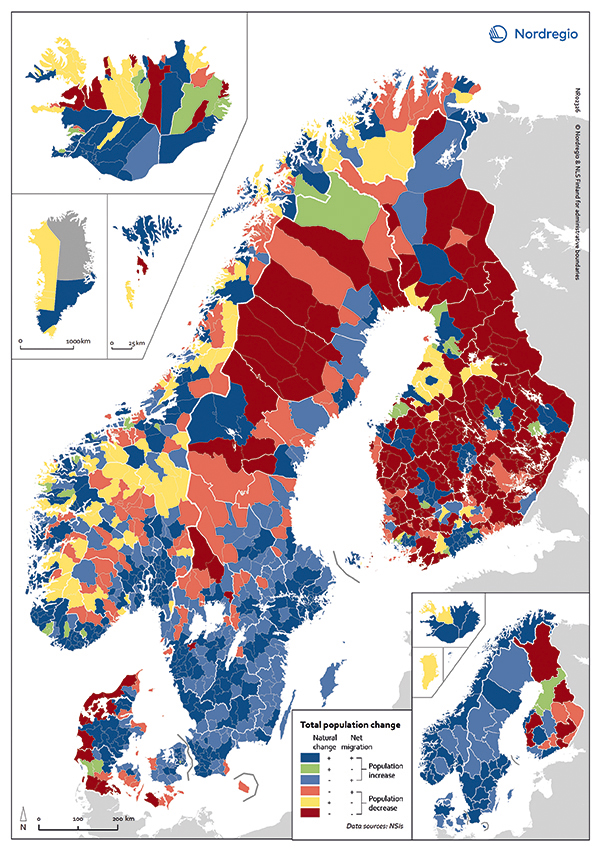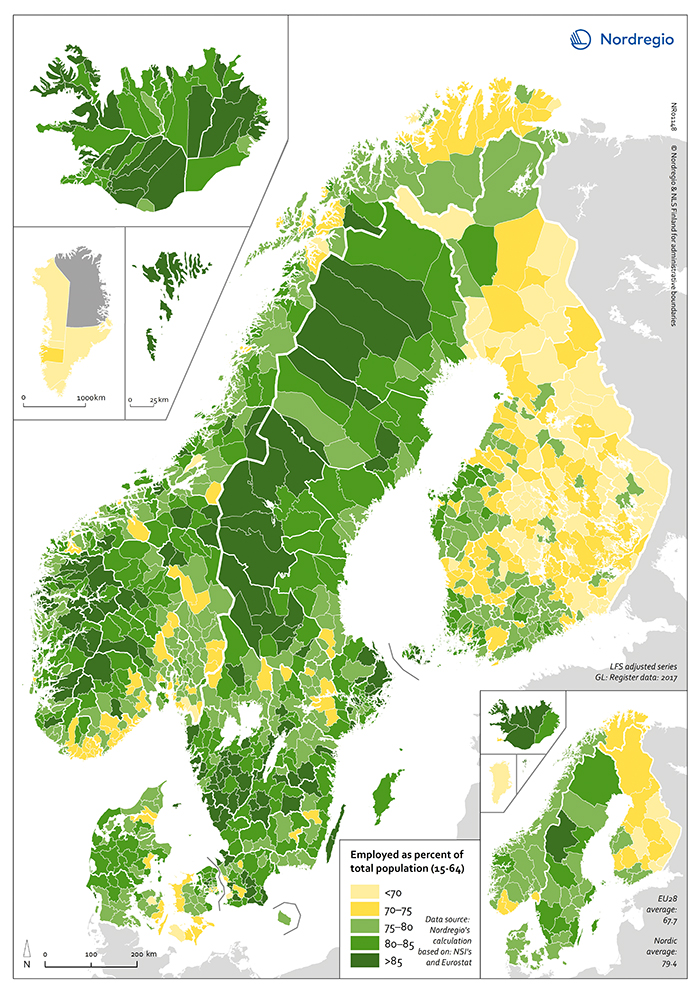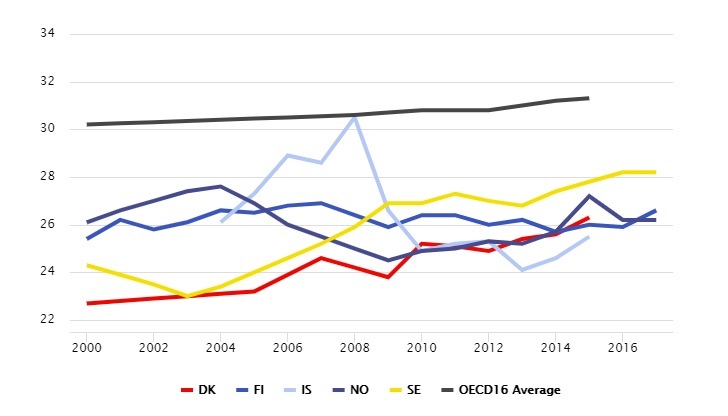The Nordic Council of Ministers has a vision to make the Nordic Region the world’s most sustainable and integrated region by 2030. A closer look at the regional and local level reveals how the Nordic Region is developing and moving towards this target. This unique publication is a valuable tool in detecting and analysing the short-term and long-term changes within and between the countries: How are we realizing the vision? And what more should be done? This data helps smaller municipalities in the countries to compare to one another, rather then base their results on comparisons with big city regions. The State of the Nordic Region 2020 presents a series of facts and figures showing the current state of play within core socioeconomic sectors. This inlcludes three overall themes.
You can find the whole “State of the Nordic Region 2020” issue here.
Demography

The total Nordic population has grown by 18% since 1990. Nevertheless, urbanisation, decreasing fertility rates and increasing life expectancy are changing the demographic make-up of Nordic regions and municipalities. These long-term trends are expected to shape the Nordic societies and test the Nordic welfare model in the years to come. Urbanisation is particularly pronounced in the Nordic countries, where the population is more internally mobile than in other European nations.
One of the biggest problems the Nordic region has to face is small fertility rates. Fertility has hit an all-time low in Iceland, Norway and Finland, and the Faroe Islands is the only place where the rate is high enough to sustain the existing population through natural increase alone. In this context, immigrants are becoming an increasingly important part of the population, particularly in rural and sparsely populated areas.
Population ageing has been one of the main demographic trends in the Nordic Region in recent decades and projections indicate that this trend will continue
Labour market

Employment rates has increased in all Nordic countries during the last two years. Full employment is one of the cornerstones of what is known as the Nordic model and, historically, the Nordic countries have enjoyed comparably high employment rates, particularly for women and older workers.
The average Nordic employment rate was 79.4% in 2018, considerably higher than the EU28 average of 67.7%. In recent years, and in line with a growing economy, the employment rate has increased throughout the Nordic Region. It is still lowest in Finland and Greenland, although the increase in Finland between 2016 and 2018 was faster than the Nordic average.
The highest employment rate in the Faroe Islands and many of the smaller municipalities in Iceland, Norway and Sweden. Most of the municipalities in the local labour market area of Stockholm, as well as municipalities of Copenhagen and Reykjavik have employment rates above 80%.
Economy
The Nordic countries have relatively small wage gaps, high employment and high taxation, combined with good quality education and social security, all of which contribute to relatively low income inequality, below the OECD average. However, as in most countries, the income gap is growing in the Nordic Region.
The combined GDP of the Nordic Region in 2018 was $1.64 trillion, corresponding to the 12th largest economy in the world, up from $1.44 trillion in 2015, the lowest figure during the reference period (2011–2017). Sweden has the largest economy in the Nordic Region.
